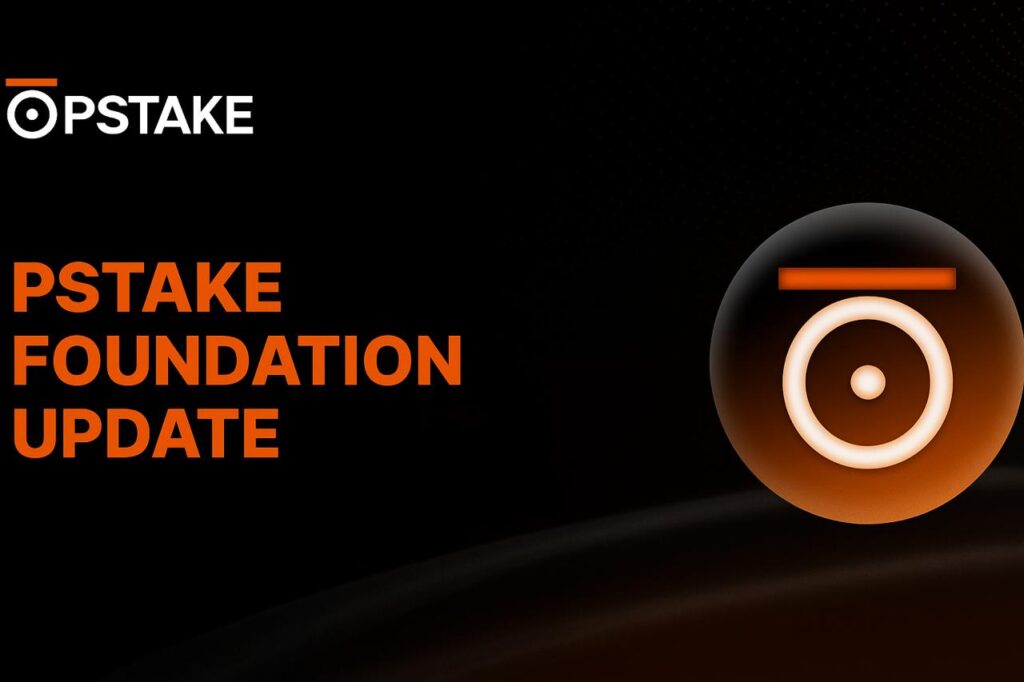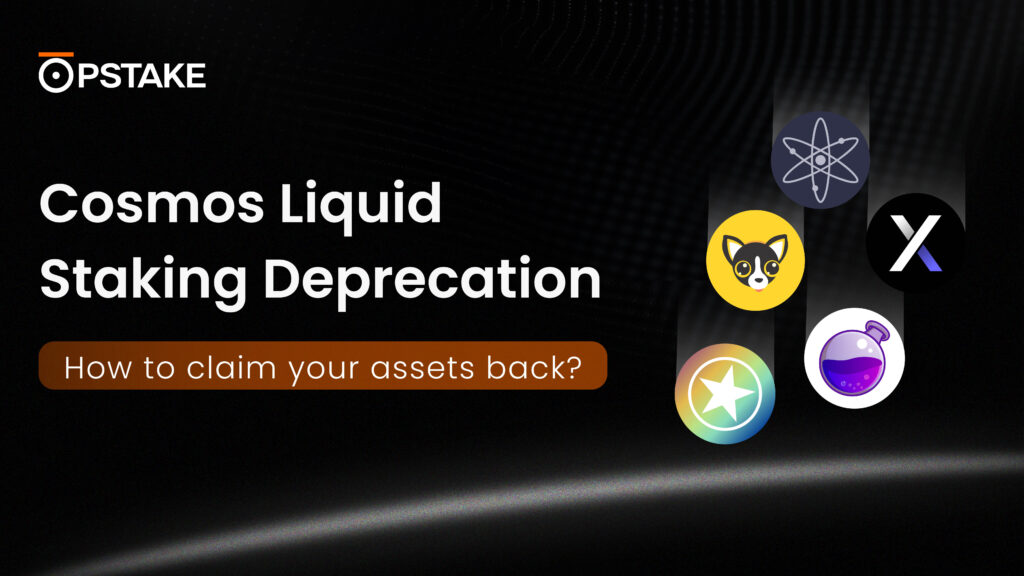With pStake Finance moving into the heart of the Bitcoin ecosystem on its mission to provide native Bitcoin yields to holders, we’ve crafted this Bitcoin 101 series to help newcomers understand the number-one-ranked cryptocurrency slightly better.
With thousands of articles relating to Bitcoin available online, we hope our series can condense the complex information, demystify the confusing jargon, and provide an insightful overview of the granddaddy of the crypto world.
We kicked off the series by introducing the basics of Bitcoin, then moved on to break down proof-of-work (PoW) algorithms and blockchain technology. The last entry overviewed everything you would need to know about Bitcoin Layer-2s.
Today, we want to explore the world of Bitcoin further by unveiling a relatively new concept that’s starting to gain traction in the industry: Bitcoin Liquid Staking.
If you’ve been eagerly awaiting the opportunity for your BTC holdings to generate yield, this one’s for you. Bitcoin is on the verge of transforming into a yield-generating asset through BTC Liquid Staking, and this article contains everything you need to know to grasp this exciting development.
So, top up your beverage, grab yourself a crumpet, and let’s start today’s binge-reading session as we explore Bitcoin in more depth.
Traditional Staking vs Bitcoin Liquid Staking
Bitcoin liquid staking is a relatively new concept that has swiftly made its mark on the crypto industry. What initially started as a pipe dream to earn a yield on idle BTC sitting in cold storage is quickly becoming a reality with new developments from projects like Babylon and pSTAKE.
We believe a solid understanding of both staking and liquid staking is essential to understanding Bitcoin liquid staking.
So, let’s take a look at some definitions.
- What is Staking?
“Staking is a process of token holders depositing assets to add economic security to a proof-of-stake (PoS) chain to validate transactions and earn rewards.”
Let’s break that down a little.
Staking is a process of token holders depositing assets to add economic security to a proof-of-stake chain…
Proof-of-stake is a consensus mechanism used by the majority of blockchains, such as Ethereum, Solana, Cardano, and Cosmos. It requires token holders to stake their assets into a chain to add economic security. The more tokens staked on a network, the higher its economic security, making it difficult for malicious actors to attack it.
…to validate transactions and earn rewards.
Stakers are tasked with validating the transactions that flow through the network by reaching a consensus and adding new blocks. As a reward for their economic security, stakers are usually rewarded with more native tokens, traditionally provided through inflation.
- What is Liquid Staking?
After understanding traditional staking, liquid staking can be defined as the following:
Liquid staking provides all of the benefits of traditional staking while allowing holders to retain the liquidity of their staked tokens.
Liquid staking differs from traditional staking through one very distinct characteristic: liquidity.
Liquidity is relinquished when users deposit their tokens into a PoS protocol to add economic security. This means their tokens are locked away and cannot be used elsewhere.
Liquid staking combats the liquidity dilemma in traditional staking by allowing stakers to retain the liquidity of their assets and use them elsewhere in the crypto economy.
There are many derivations of how liquid staking protocols function. However, they traditionally mint a liquid staking token (LST) when users deposit their assets. This token is a liquid representation of the underlying staked asset that can be freely traded or utilized on other DeFi platforms. It can also be redeemed for the underlying asset at any moment.
- What is Bitcoin Liquid Staking?
With this understanding of traditional staking and liquid staking, let’s take a look at a definition of Bitcoin liquid staking:
“Bitcoin Liquid Staking is a process that allows BTC holders to stake their assets natively, without requiring a bridge, to secure other networks and earn rewards while retaining liquidity.”
We like to keep things simple in Bitcoin 101, so let’s break this down.
Bitcoin Liquid Staking is a process that allows BTC holders to stake their assets natively…
Bitcoin Liquid Staking is a new innovation that allows users to stake their native BTC tokens to provide a service, such as sharing security with a different blockchain.
…without requiring a bridge…
BTC staking options have existed for some time. However, previous solutions have always required users to bridge their assets to another blockchain, a process that can be complex and risky, presenting unwanted risks to BTC holders. Newly emerging solutions, like those provided by Babylon and pSTAKE, circumvent this problem.
…to secure other networks and earn rewards…
Users can stake their BTC to secure other networks by sharing security from Bitcoin to PoS ecosystems. This is made possible through technological advancements that use inherent Bitcoin properties, such as timestamping, to turn Bitcoin into a ‘slashable asset ‘, a term that refers to the ability to penalize malicious activity by reducing the staker’s holdings. As a result, BTC can be utilized to provide economic security to PoS chains, and any malicious activity would result in BTC being slashed—providing an incentive for stakers to stay honest. In return for economic security, BTC stakers would receive rewards—similar to traditional staking.
…while retaining liquidity
This is the most important distinction from traditional BTC staking.
When liquid staking Bitcoin on solutions like pSTAKE, BTC holders retain liquidity through an LST, which can be used elsewhere in DeFi.
How Does BTC Liquid Staking Work?
Bitcoin Liquid Staking is a very new innovation in the crypto space, with only a handful of platforms providing a secure service.
The concept of turning BTC into a stakable asset was only made possible through recent developments in the Bitcoin codebase, such as SegWit and Taproot. From there, developers discovered that data could be inscribed onto the blockchain, which led to the ‘Runes and Ordinals craze in 2024 ‘, a period of intense innovation and experimentation in the Bitcoin community, bringing NFTs to the Bitcoin blockchain through inscriptions.
What is Babylon Trustless BTC Staking?
Now, developers are taking the concept further with platforms like Babylon using Bitcoin scripts and specialized cryptographic techniques to turn Bitcoin into a slashable asset, allowing it to be used to secure PoS chains. The idea is that Bitcoin provides security-sharing by lending economic security to PoS chains while allowing BTC holders to earn rewards.
Babylon leverages utilities in the Bitcoin codebase, such as the time-locking feature, to turn BTC into the slashable asset required to stake it on POS chains. Malicious activity is disincentivized through UTXO burning, helping protect PoS chains.
What is pSTAKE Bitcoin Liquid Staking?
pSTAKE’s BTC Liquid Staking solution is built on top of Babylon. While Babylon provides traditional staking for BTC, pSTAKE takes it one step further by introducing liquid staking for Bitcoin to offer yields to holders.
Users simply stake their Bitcoin on pSTAKE to receive yields on BTC holdings. The platform will then deposit the staked assets onto the Babylon security-sharing infrastructure to generate PoS token yields for BTC holders. Most importantly, BTC holders retain liquidity of their BTC through a liquid staking token (LST) minted when depositing on pSTAKE.
Earn Yield: The Future of Bitcoin Liquid Staking
Liquid Staking Bitcoin is about to change Bitcoin’s future by introducing a new value proposition beyond its current role as a store of value.
Providing an avenue to receive yields for holders has been a much-needed requirement that pSTAKE is starting to solve. We have a solid fundamental faith in Bitcoin and believe that expanding BTFfi through liquid staking will be a generational opportunity for users. We also think accessing Bitcoin yields shouldn’t be complex, risky, or unsafe, so we’re focused on bringing the first liquid staking solution to Bitcoin.
Many BTC holders observed the ETH staking revolution from the sidelines but could not participate. Now, with institutional investment flooding into the industry via ETFs on US markets, a Bitcoin liquid staking presents a golden opportunity for hedge funds and corporations to enhance capital efficiency on their BTC holdings.
The BTC liquid staking solution unlocks a new era of liquidity for BTC holders who would have just kept their BTC stored in a cold wallet. Now, BTC “hodlers” can easily use their idle BTC and generate a yield through liquid staking.
About pSTAKE Finance:

pSTAKE Finance is a Bitcoin Yield and Liquid Staking protocol, backed by Binance Labs.
With pSTAKE Finance, users can liquid stake BTC to get rewards from Babylon’s Trustless BTC staking for securing other app chains while maintaining their liquidity, powered by institutional custody providers like Cobo.
Accessing Bitcoin yields should not be complex, risky, or unsafe. With four years of liquid staking expertise and expert-curated yield strategies, pSTAKE Finance helps individuals and institutions put their BTC to work in BTCfi.
pSTAKE Finance has partnered with leading blockchain security firms, such as Halborn, Hexens, Oak Security, Immunefi, Forta, and more, to offer a secure liquid staking product suite.
PSTAKE is the governance and incentivization token of the pSTAKE Finance protocol. It has some of the most prominent investors, including Binance Labs, DeFiance Capital, Spartan Group, Coinbase Ventures, and Kraken Ventures.










